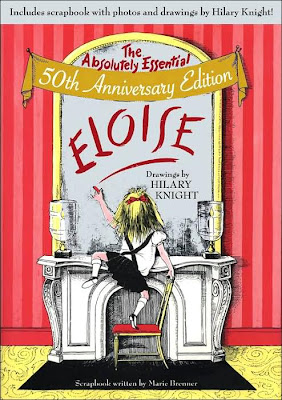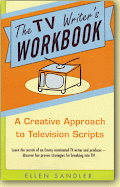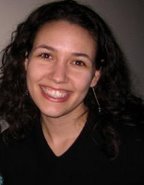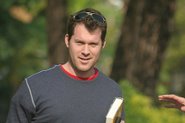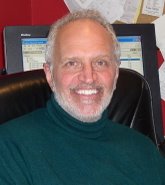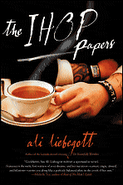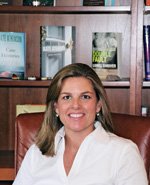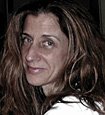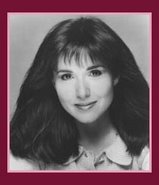




Welcome to “Up Close and Personal.” For every interview I will be introducing a literary personality discussing his views and insights, as well as upcoming literary events around the world.
Today’s interview is with Bill Scheft, a comedy writer and novelist. He was hired as a monologue writer for
Late Night with
David Letterman in 1991. He was with the program for its last two years at
NBC, then he moved over to
CBS in August, 1993 to work on
Late Show with David Letterman.
He served as head monologue writer for the Late Show until 2004. For the past 19 years with Letterman, he has been nominated for 16 Emmys. He is best known for his weekly humor column,
"The Show," which ran in Sports Illustrated from 2002-2005. A collection of his columns, The Best of "The Show", was published by Warner Books in 2005.
Bill Scheft, is the author of three novels:
The Ringer (2002),
Time Won't Let Me (2005) and
Everything Hurts (April, 2009,). Time Won't Let Me was a finalist for the 2006 Thurber Prize for American Humor. The
Ringer has been
optioned for film by United Artist based on Mr. Scheft's adapted screenplay. His book the best of the show is a collection of his 112 of his weekly humor columns from Sports Illustrated, which run from 2002-2005.
He is a frequent creative presence on award shows, roasts and television specials. Mr. Scheft
wrote for the 1995 and 2005
Academy Awards, was the head writer for three
ESPY Awards and has contributed special material to the
Emmys,
Tonys and
Grammys.
He has also written for the The New Yorker, The New York Times, Esquire and Sports Illustrated. He lives in New York City with his wife, comedian Adrianne Tolsch.
E.I. Would you share some early insight into who you were as a teenager? What were you like? Give us three “Good to Know” facts about your first job, the inspiration for your writing, any fun details that would enliven your page. Tell also your fans about Bill Scheft -- the man behind the comedy writer, novelist, former head writer for David Letterman, nominated for 15 Emmys and now an author?
Bill Scheft - I'm
still with Dave Letterman, have been there since 1991. I was never the head writer. If I was, we would be doing this interview from a locked ward. I am now up to
16 nominations, and as you know, you don't list your nominations unless you've never won.
EVERYTHING HURTS is my third novel. My first novel, THE RINGER, was optioned for film and my second, TIME WON'T LET ME, was a finalist for the 2006 Thurber Prize for American Humor. And as you know, you don't say "finalist" unless you didn't win.
Me as a teenager? Not pretty. I was a great student who would have given it all up to be a great athlete. My first job was as a bag boy at a produce market. 14 years old. 5-1, 91 pounds, bad skin. As I said, not pretty.
Here's three ideally interesting facts about me. I got a job out of college as a sportswriter for the
Albany Times-Union and landed the first major interview with then
Giants rookie QB Phil Simms, who remains my friend to this day. I was a stand-up comic for 13 years and the house emcee at Catch a Rising Star from 1982-86. The man I replaced?
Bill Maher. I also made lifelong friends back then with another struggling comic, Larry David, and was the first person to read for the part of
George Constanza for what was then a longshot pilot idea for
NBC about a stand-up comic.
My inspiration for writing came at first from my uncle, the great writer Herbert Warren Wind, I aspired to live the life of a writer. Now my inspiration comes from the notion that I am doing exactly what I should be doing. The results are not up to me.
E.I. What is it about the art form of comedic writing that enchants you the most?
Bill Scheft - People always say the great thing about being a stand-up comic is that you're your own producer, director, writer and star. I feel the same way about writing novels. You get to create a chaotic world inhabited by people whose lives are much more complicated than yours and see if they can put themselves back together. All that, and no rejection from a live audience.
E.I. Many writers describe themselves as "character" or "plot" writers. Which are you? And what do you find to be the hardest part of writing?
Bill Scheft - The first novel I wrote,
WHO LISTENS? was never published. It was a typical first novel: 100,000 words, 80,000 of which were "I." Everybody that read it said the same thing: "This book is hilarious. How 'bout a plot?" I thought it was a tad nitpicky, but since then, I've tried to have some semblance of a story in each of my books. But I am much more interested in behavior than results.
E.I. How do you imagine the audience when you are writing? Do you have sheets of newsprint covered in a story boards all over your walls?
Bill Scheft - I imagine my audience speaks English. Anything else is gravy. As for the "sheets of newsprint covered in story boards" that sounds like some fantasy of yours involving
Don Draper, a razor and
Ed Asner's back.
E.I. What was your biggest challenge in writing “Everything Hurts”? How did you decide what level of details your reader will accept? Did you work them out in advance, or did they evolve as you wrote the story? How did you overcome these challenges?
Bill Scheft - Great question. The biggest challenge was writing a book about a guy trying to get rid of a psychosomatic limp when I had been limping for years. Because psychosomatic pain can be relieved by exploring the sources of one's unconscious rage, I wrote the book to try and "art" myself out of the pain. So, it takes me two years to write and when I'm finished, son of a bitch, the guy in the book is better, I'm still dragging a foot.
Now, here's where Providence intercedes. Ten days after I sell the book, I see yet another doctor, who takes yet another look at my x-rays and says, "You need a hip replacement. This is a no-brainer. You'll be pain-free." And that's what I did in July, 2008. Many people ask me, "Aren't you furious you suffered for so long?" And I say, "No. I got a book out of it."
E.I. In
“Everything Hurts”, How much of Phil Camp is planned out in your head? How do you know where you will go next with your story?
Bill Scheft - On a good day, when I finish a writing session, I know what I'll be doing in the next session. But, like I have to tell you, every day is not a good day. For me, writing fiction is getting into a state of mind where your characters guide you, and the only question I ask is, "Is this plausible?" In terms of the story, as it moves along, it becomes about the balance between behavior and situation. What's needed, who I need to check in on and who I need to take care of.
E.I. If you were asked to read a page from “Everything Hurts” is there one that you would personally select to share with your fans? And why?
Bill Scheft - If I had to read one page, it would be page 229, near the end. Phil Camp has become this accidental self-help guru writing under the name Marty Fleck. He has a twice a week syndicated column called "Baggage Handling." It is wildly popular, which means Marty Fleck gets bags of hate mail. When the column is canceled, his newspaper friends hold a "Marty Fleck Memorial Dinner" and Phil's publicist reads a list of salutations from his hate mail over the years. That begins and ends on Page 229 and is all the reason you need for why famous people isolate.
E.I. How do you weave so much fun and elements of information into your stories and yet you keep them so fast-paced?
Bill Scheft - Well, who am I to disagree with that cogent analysis? Writing is rhythm. The choices you make with words (which I first learned from the Latin poet Catullus) maintain that rhythm. If the reader thinks enough to invest his time in your work, that work should be able carry him along in tone and pace as much as content.
E.I. What did you find to be the hardest part of writing the book? What was your biggest challenge in developing your character, Phil Camp and Jim McManus? Did you work them out in advance, or did they evolve as you wrote the story? How did you overcome these challenges?
Bill Scheft - You have to believe me on this. I had no idea I had written a book about two brothers until I finished it and other people I trust told me I had. I had worked out very little in advance, and whatever I needed to work out was done to explain the present and make the behavior plausible. So, the answer is they evolved. Otherwise, if I had had to get it all right, or most of it right, in my head from the start, that is a challenge I would never have been able to overcome.
E.I. You are well known in the writing community as the 15-time Emmy-nominated writer for David Letterman, an author of three novels, Do you ever feel pressure or insecure, or are you able to separate all that from your own creative process?
Bill Scheft - What do you mean, do I ever feel insecure? Why do you ask that now? Did you hear something? Am I getting fired? I'm getting whacked, right? Come on, tell me. It was the fruitcake I sent to Sarah Palin, wasn't it?
E.I. Mr. Scheft, Thank you for contributing to my blog. It has been a pleasure for me to get to know your work a little better. Would you like to end your interview with a writing tip or advice for young aspiring writers?
Bill Scheft - Writers write.
Anything else is just conversation.
Photo of Bill Scheft by John Filo of CBS
To learn more about Bill Scheft, please visit his
WEBSITE.To purchase his books, please visit
AMAZON and
Barnes & Noble




